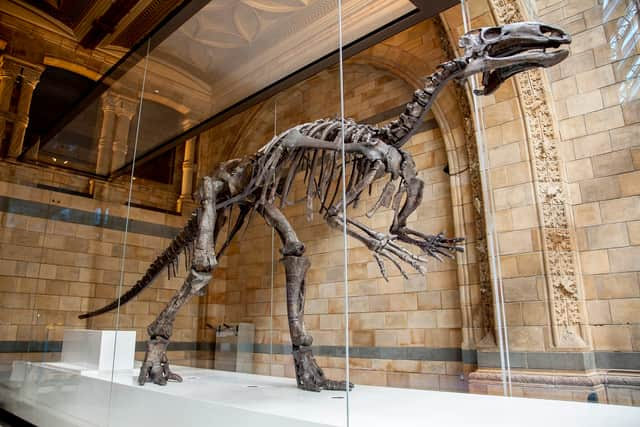Dinosaur extinction: New theory involves sun-blocking dust as a key factor in mass death 66 million years ago
and live on Freeview channel 276
This article contains affiliate links. We may earn a small commission on items purchased through this article, but that does not affect our editorial judgement.
It wasn't just the asteroid, or its impact, that killed the dinosaurs. Researchers believe there is another key element that may have played a larger part than initially thought in the extensions of the large beasts.
Around 66 million years ago, an asteroid between 10 and 15 kilometres wide struck Mexico’s Yucatan Peninsula, and its impact caused mass devastation, setting off wildfires, earthquakes, and megatsunamis which led to a collapse of the ecosystem needed to allow plants and creatures to stay alive.
Advertisement
Hide AdAdvertisement
Hide AdHowever, new research published in Nature Geoscience suggests that while this impact critically harmed hundreds of dinosaur species, past studies had overlooked the role of trillions of tons of dust that could have been propelled into the air when the asteroid hit. The researchers believe the asteroid caused a "global winter" as clouds of silicate dust and sulphur blocked out the sun’s rays and causing the global surface temperature to drop as much as 15C.


This sudden drop in temperature would have caused plants to struggle to survive due to the lack of light, which led to a chain reaction causing herbivores to starve, leaving the carnivores without prey, leading to a mass extinction of 75% of species up and down the food chain. The amount of dust thrown into the air would have been around 2,000 gigatonnes which is more than 11 times the weight of Mount Everest.
The researchers ran simulations on certain sediment found at a fossil site in North Dakota and found that the diameter of the grains ranged from 0.8 to 80 micrometres, with an average size of 2.88 micrometres. They discovered the dust could have blocked out the sun for up to two years and stayed in the atmosphere for 15. This would have restricted photosynthesis for plants and collapsed the natural ecosystem.
Some of the dinosaurs, who lived on the other side of the world and were not impacted by the initial asteroid strike, would have been slowly dying over a few years of starvation among other things. Other research suggests this may be the same if a nuclear bomb were to strike Earth.
Advertisement
Hide AdAdvertisement
Hide Ad“The research on this proposes the Chicxulub mass extinction was mainly governed by either sulphuric gas emissions or soot injections from global wildfires,” Cem Berk Senel at the Royal Observatory of Belgium in Brussels told New Scientist. “There’s still so many big questions to uncover about what happened to life after one of the biggest mass extinction events,” he says.
Comment Guidelines
National World encourages reader discussion on our stories. User feedback, insights and back-and-forth exchanges add a rich layer of context to reporting. Please review our Community Guidelines before commenting.
